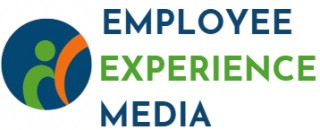Understanding the Role of Change Management Software
Exploring the Functionality of Change Management Software
Understanding the complexity of change management software is crucial as organizations strive to improve their employee experience by enabling seamless adaptation to changes. This software serves as a pivotal tool in managing the intricacies of change requests, thereby minimizing disruptions and ensuring compliance with health safety and regulatory standards.
Change management software offers a structured solution to help organizations navigate through changes. By managing workflows and processes, it ensures operational continuity and efficiency. This kind of software is designed to track and manage change processes, reduce risk, and promote effective risk assessments.
Organizations benefit from its ability to optimize management processes through real time updates and notifications. With cloud-based options, these tools offer flexibility and accessibility, allowing teams to remain connected across various systems. For businesses aiming to achieve best practices in change processes, utilizing this software becomes indispensable.
Moreover, effective change management tools come with specific features that streamline the management process. Ensuring compliance while handling change requests becomes easier, and this accountability enhances staff morale and engagement, an aspect that will be delved into further.
It's worth noting that the adoption of change management software also comes with its own challenges, such as system integration and user adaptation. However, with time and strategic implementation, the advantages far outweigh the initial hurdles.
For businesses aiming to enhance their operational processes, embracing change management software is a strategic move. It transforms change from a potential disruption into a systematic process, fostering an engaged workforce prepared for evolution. To further understand how these dynamics better the overall experience, explore
embracing HRIS as a pathway to enhanced employee experience.
Essential Components for Robust Change Management
When considering the implementation of change management software, it's crucial to identify tools with features that streamline managing changes. High-quality change management solutions prioritizing efficiency and user accessibility become integral to this process. Here's a look at the indispensable features that distinguish effective change management tools:
- Process Automation: One of the biggest advantages of employing change management tools is automating workflows. Automating processes minimizes manual intervention, reduces human errors, and saves valuable time.
- Real-Time Tracking: Allowing organizations to monitor change processes in real time facilitates transparency and enhances decision-making by providing up-to-date information.
- Cloud-Based Accessibility: Modern changes require flexibility, and a cloud-based solution ensures team members can access the system from anywhere, fostering a collaborative work environment.
- Risk Assessment Capabilities: Tools equipped with robust risk management features enable organizations to identify and mitigate potential risks before they impact operations. This proactive approach contributes to maintaining high standards of safety and compliance.
- Regulatory Compliance: Organizations must adhere to various compliance norms. Effective change management software integrates regulatory compliance management, ensuring changes align with required standards and reducing the risk of non-compliance.
- Comprehensive Reporting: Effective change workflows are driven by data. Advanced reporting features provide insights that inform management decisions and tailor strategies for ongoing improvement.
The key to enhancing employee experiences lies within understanding which features best address your organizational needs. By leveraging these tools, companies can foster a more supportive environment for change, thereby improving employee morale and engagement. For practical applications and further insights into the tools that can transform the employee experience, explore these
solution options.
Impact on Employee Engagement and Morale
Boosting Employee Engagement through Efficient Change Management
Implementing a robust change management strategy bolstered by effective software can significantly enhance employee engagement and morale. Change management software facilitates a seamless execution of change requests by providing a structured workflow that ensures transparency and clarity at every phase of the change process. This can help employees feel more secure and invested in their work, as it reduces ambiguities and enhances their understanding of operational changes.
Such software is especially vital in maintaining regulatory compliance and health safety standards, which are critical aspects of workplace morale. When employees perceive that their safety and compliance are being prioritized, their trust and satisfaction with the organization rise substantially. This is not only beneficial in mitigating risks but also plays a role in reducing turnover as employees feel valued and protected.
Transforming the management process through a management tool that offers real-time risk assessment and incident reporting keeps employees informed and involved. They are more likely to engage with the change processes, knowing that their feedback can lead to process improvements and is integral to the organization's success.
Moreover, employing a cloud-based solution allows for the swift dissemination of information and empowers employees to stay updated regardless of their location. The features that enhance compliance and reduce risk are instrumental in ensuring that change in organizations is approached systematically, minimizing disruptions and uplifting employee morale.
Ultimately, using change management software avails an opportunity to foster a culture of adaptability and openness. As organizations navigate operational processes with precision and care, the overall employee experience improves, leading to increased productivity and job satisfaction. For more on the tools that can enhance employee experience, consider exploring how
cloud-based HR solutions are making an impact.
Challenges in Implementing Change Management Software
Overcoming Barriers to Effective Implementation
Implementing change management software in organizations comes with its share of challenges. To effectively manage change, it's essential to recognize the potential hurdles that may arise during the adoption process.
One significant challenge is ensuring compliance with existing operational processes and regulatory requirements. Organizations must ensure that the change processes adhere to health safety and compliance standards. Ignoring these can lead to significant risks and disrupt not only the change project but also overall business operations.
Moreover, the complexity of integrating new change management tools into existing management systems is another common obstacle. If not done correctly, it can lead to workflow inefficiencies rather than improvements. Understanding the interfaces, ensuring compatibility, and simplifying the integration of these management software tools are crucial steps.
Resistance to change among employees also poses a risk. A lack of engagement can stem from inadequate communication about the change process. It's crucial to communicate the benefits of the change effectively and involve employees in the process. This encourages acceptance and participation, mitigating the risk of resistance.
Training is another aspect that can influence the success of the software's implementation. Employees need to be equipped with the right skills and knowledge about the new tools to enable smooth transitions. Offering comprehensive training sessions and user support can ease the process, ensuring that team members feel confident using the change management software.
Additionally, there's the challenge of allocating sufficient time and resources. Implementation requires commitment and support from top management to drive the change process. Organizations need to strategically plan for this, creating a phased timeline and ensuring resources are available for successful deployment.
Ultimately, to overcome these challenges, adopting best practices is essential. Emphasizing risk assessment, leveraging cloud-based solutions for real-time updates, and aligning change requests with the organization’s strategic goals can guide the implementation. MOC software, with its robust features, can serve as an effective tool in reducing risk and improving processes when adopted thoughtfully.
Best Practices for Successful Implementation
Guidelines for Seamless Change Management Integration
Implementing change management software can significantly transform how organizations handle change processes, but it requires a strategic approach to maximize its benefits. Here are some best practices to consider:
- Thorough Risk Assessment: Before implementing any change, conduct comprehensive risk assessments to evaluate potential impacts on operational workflows and safety. This helps in reducing risks associated with new processes or software.
- Clear Communication Channels: Ensure open and transparent communication across all levels of the organization. Employees should be informed about changes and understand how these will affect their roles and responsibilities.
- Training and Support Systems: Provide relevant training to employees on how to use the change management tools effectively. Continuous support and resources should be available to assist with the management process.
- Customized Solutions: Tailor the software features to fit the specific needs of your organization. This includes configuring change requests processes and workflows to align with your regulatory compliance and business objectives.
- Regular Monitoring and Evaluation: Evaluate the performance of the change management systems routinely. Gather feedback from users to identify areas for improvement and ensure the software meets the organization's evolving needs.
- Promote a Culture of Compliance: Foster an environment where compliance with health and safety regulations is prioritized. This includes consistently using MOC software to manage changes effectively, safeguarding against compliance risks.
- Integration with Existing Systems: Ensure that the change software integrates seamlessly with existing systems. This includes other cloud-based solutions and tools that the organization uses.
These strategies are crucial for a successful implementation of change management tools, encouraging employee engagement and reducing transition-related risks. Aligning these practices with your organizational goals will drive both compliance and operational efficiency.
Case Studies: Real-World Applications
Success Stories from Diverse Industries
Implementing change management software has proven to be a transformative solution across various sectors, improving workflows, risk assessment, and ensuring regulatory compliance. Here are some real-world examples where organizations have successfully navigated changes and boosted employee experience:
- Manufacturing Company Enhances Compliance and Safety: A global manufacturing corporation faced challenges with compliance and safety regulations. By integrating change management software, they streamlined their processes, resulting in better compliance tracking and reduced risk. The system’s features allowed real-time tracking of change requests and ensured continuous improvement in health safety protocols.
- IT Firm Optimizes its Change Management Process: An IT service provider was struggling with managing frequent changes to its internal systems. By adopting a cloud-based management tool, they successfully optimized their change processes. The software provided their teams with a cohesive management process and enabled them to handle operational changes efficiently, thereby minimizing disruptions and improving employee morale.
- Healthcare Organization Improves Risk Management: A leading healthcare provider sought to improve its risk management during organizational changes. Through the software’s comprehensive risk assessment features, they were able to identify potential risks early and ensure smooth transitions without compromising on safety or regulatory compliance. This proactive approach helped maintain high levels of employee engagement and satisfaction.
Adaptation in the Agile Sector
For companies that operate in agile environments, change management tools have facilitated seamless transitions while keeping their teams engaged and motivated. Here's one example:
- Tech Company Boosts Team Morale: A tech company operating under the agile methodology used management change software to align their rapid change needs with their organizational goals. This process not only ensured timely implementation of changes but also empowered employees by involving them in the decision-making process. The software's intuitive interface and real-time updates enhanced communication efficiency, resulting in significantly higher employee morale.
Lessons Learned and Moving Forward
These real-world applications highlight the importance of implementing effective change management solutions. They demonstrate that success lies in adopting best practices during implementation and understanding the critical role of these tools in enhancing employee experience. By learning from these examples, organizations can tailor their strategies to better manage change requests and reduce risks, ultimately fostering a more resilient workforce and a supportive work environment.














